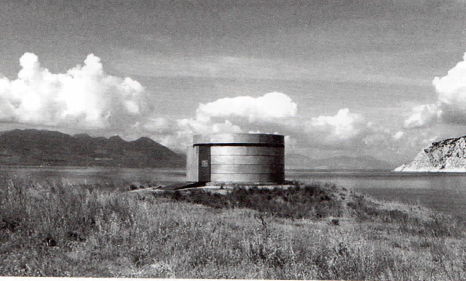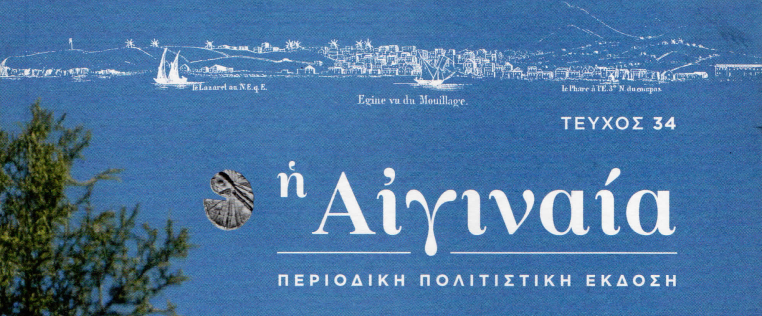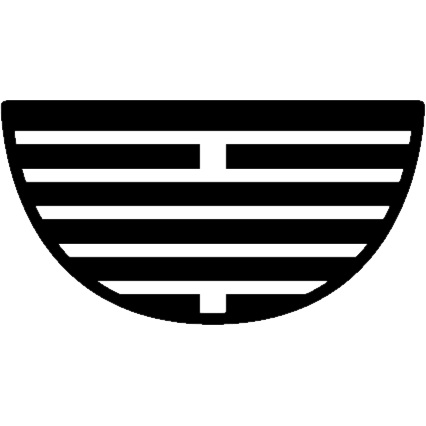Perdika: Looking Out and Looking In
September 2025 | project
As part of Vessel's ongoing work to preserve the landscape and biosphere of Aegina, we contributed the below essay to the Summer 2025 edition of Aiginaia Magazine.

Looking Out and Looking in:
Art and Ecology at Perdika Point
by Vessel
Walking in the low sun of the late afternoon, out of season, from the port of Perdika, we cross the beach with its abandoned loungers strewn haphazardly across the sand. We pass in front of the decaying hull of a fishing boat and balls of old nets caught on thorny bushes, and the flotsam that has collected over years of summer and winter cycles. We move from the tourist space of the beach holiday, to the remains of a once thriving local fishing industry. And as the pieces of polystyrene subside, the wildness of Perdika Point starts to unfold before us in all its weathered and windy glory. We have arrived in something like nature.
This is a place where many things have existed throughout history, from dense forests, to grasslands, temples and chapels to military bases. Perdika itself takes its name from the short fat bird that chuckles at us from the hillsides, even as its numbers dwindle and its call is heard less frequently. Today it is still a haven for numerous other wild birds: the skylarks which sing atop the stunted trees, and the kingfishers that dart along the rocky shore.
We walk amongst the remains of World War II German bunkers that have over time, become DIY art exhibitions, party venues, canvases for graffiti, and shelters for animals. This place was once used by the Greek Navy as a strategic look-out point for the Saronic Gulf, and was expanded by the Germans during the Occupation. It's not possible to know the extent of the fortifications from what appears on the surface, poking up between the wild grass, barbed wire, and cacti. It feels like a place that has always been made for looking outward.
At the very end of the point, we find the shattered remains of what was briefly a powerful monument to this natural landscape. This structure was designed by architect Franz Berzl in collaboration with artist Gustave Deutsch in 2003, as part of a group project called The Aegina Academy, supported by European funding. It once functioned as a camera obscura: a kind of building-sized lens, which uses a narrow slit to project an image of the outside world onto the darkened walls of the interior; like a camera, the image is mirrored, and upside-down.
In the history of art, many painters and sculptors have used mirrors to look at their subjects in a new way; to see them in reverse, or upside down, in order to see them better, by seeing them anew, with fresh eyes, unspoiled by history and preconceptions. This technique creates a moment of distance or strangeness between the viewer and the familiar object, in order to better connect with it.
The camera obscura invites us to reflect both on what we see – in this case, the bright, beautiful landscape of Perdika Point – and on how we see; the myriad processes by which our vision of the world, and thus our life within it, is constructed.
Built on the concrete pediment of a German artillery gun, the camera obscura at Perdika is itself a kind of reflection. Most literally, it echoes the cylindrical forms of the military architecture that surrounds it, but in a mirrored form, in natural wood rather than brute concrete. Beyond that, it asks us to replace a 'looking out', with a 'looking in'; to turn our gaze from the far horizon, from history and past prejudice, towards ourselves, and what we are capable of in the present moment. It asks us to value the natural world more than we do and to be in better balance with her.
The camera obscura was originally intended to be temporary, with a planned installation of just six months. Because of its popularity with locals and visitors alike, funding was secured to preserve it, but it eventually yielded to the wind and the sea, leaving only a carcass behind. Thus it joins the other ruins on the Point: the pre-war fortifications, the German bunkers, the shells of fishing boats, the broken trunks of the cactus flowers. These layers become part of the island itself, and part of us too.
Many people who live on Aegina remember the camera obscura with great fondness, and several attempts have been made over the years to resurrect the project and bring it back to life. The original exhibition was developed with the cooperation and friendly support of the General Staff of the Greek Navy, particularly of Polemiko Naftiko Tameio Ethnikou Stolou, but today the times and the circumstances are different.
In 2022/2023 a local residents working group (ELLET) and the Aegina Mayor's office (Yiogos Zorbas) successfully defended the land from sale and development. Its intention was to work towards the site of Perdika Point becoming a protected military monument. We find ourselves once again in 2025, in a period of speculation and possible construction, looking out and looking over, instead of looking down and inward, and valuing what we already possess.
This shift in attitudes is evident in the building happening all over the island, in the growth of beach bars and hospitality businesses, all of which are necessary for the island's continuing life and prosperity. At the same time, we see how this increased activity takes away from the wildness of the island that we love: the less crowded beaches, the ones where seagrass still piles up and maintains the vital structure of the coastline, and gives us – all of us, residents and vistors alike, as well as the birds, seals, fish, and other species which call the island home – spaces to breathe, and simply be.
The camera obscura reminds us of what we already have: a landscape filled with history, a place for reflection, new ideas, and new imaginings. This is the role of art in ecology: to inspire new ways of seeing the world around us, and to become part of its ongoing flourishing.
For more than eighty years, nature itself has stewarded this place, reclaiming the military bunkers and lookout points for nesting sites. Wild asparagus and wild garlic can be foraged, poppies and myriad wildflowers admired, all whilst a plethora of Asphodels remind us of the cycles of life and death in the landscape. It has made a place for us to enjoy, and savour, and from which we all might benefit just by being present with it's rugged beauty rather than looking to make it more productive. It is up to us to re-imagine now how to build for the future, not with concrete on top of this landscape, but with it, preserving and maintaining it, as it is, for future generations of people and animals, and for the island itself.
*
Vessel is currently undertaking a research project into the role of art in the landscape at Perdika Point, with the support of a grant from PCAI – Polygreen Culture & Art Initiative.


Follow us on Instagram, Facebook, or join our mailing list to hear about news and events: